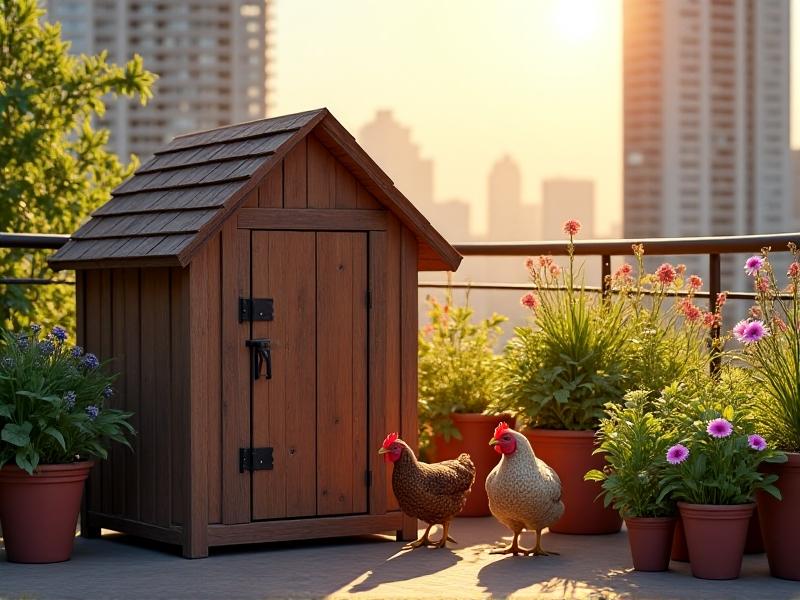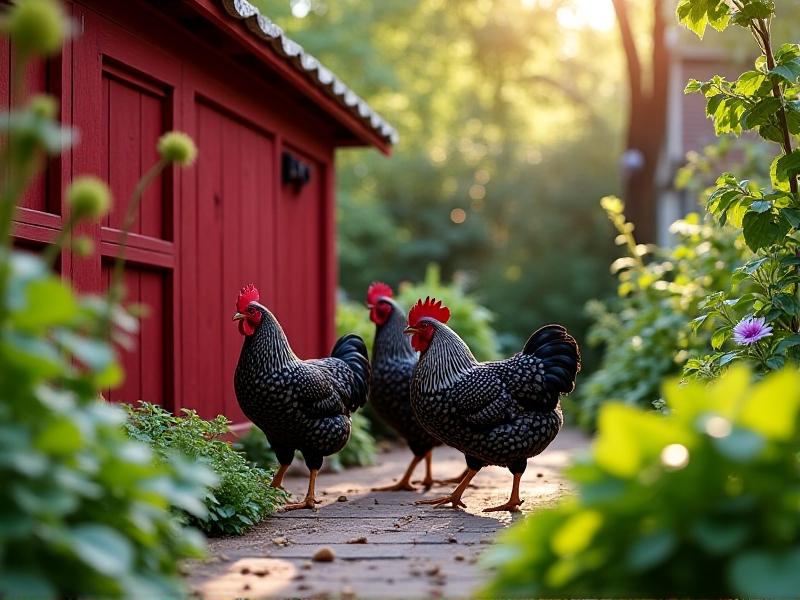The Balcony Coop: Solutions for Apartment Chicken Keepers
Why Keep Chickens in an Apartment?

Urban dwellers are increasingly drawn to the idea of keeping chickens, not just for fresh eggs but for the connection to nature and sustainable living. Apartment chicken keeping, once considered impractical, is now feasible with creative solutions like balcony coops. These compact setups allow city residents to enjoy the benefits of backyard poultry without sacrificing space or convenience. Chickens also offer pest control, natural fertilizer, and the simple joy of caring for animals—a refreshing contrast to the fast-paced urban lifestyle.
Critics often question the ethics of raising chickens in confined spaces, but when done responsibly, balcony coops can provide safe, enriching environments. The key lies in understanding chicken behavior, prioritizing their welfare, and adhering to local regulations. This movement isn’t just about urban farming; it’s a statement against industrialized food systems and a step toward self-sufficiency.
Navigating Legal and Zoning Restrictions

Before building a balcony coop, research local ordinances. Many cities restrict chicken ownership based on flock size, rooster bans, or property boundaries. Start by contacting your city’s zoning department or reviewing municipal codes online. Homeowners' associations (HOAs) may impose additional rules, even if local laws permit chickens.
Transparency with neighbors and landlords is crucial. Proactively address concerns about noise or odor, and consider sharing eggs as a goodwill gesture. Some cities require permits or coop inspections, so document your plans thoroughly. Legal hurdles can feel daunting, but countless urban chicken keepers have navigated them successfully—patience and preparation are your best tools.
Designing a Functional Balcony Coop

A well-designed balcony coop balances space efficiency with chicken welfare. Prioritize ventilation to prevent moisture buildup, using hardware cloth instead of solid walls. Include roosting bars and nesting boxes elevated from the ground to mimic natural habits. Waterproof materials like cedar or recycled plastic ensure durability against the elements.
Modular designs work best for renters or those needing flexibility. Consider foldable runs or stackable components that can adapt to different balcony sizes. Safety is paramount: secure latches prevent escapes, and predator-proof mesh keeps birds safe from urban wildlife like raccoons. Integrate greenery like herbs or lettuce around the coop to create a symbiotic micro-ecosystem.
Choosing the Right Chicken Breeds for Small Spaces

Bantam breeds, such as Silkies or Belgian d’Uccles, thrive in compact coops due to their small stature and calm temperaments. Avoid high-energy breeds like Leghorns, which require more space to roam. Hybrids like the ISA Brown are also ideal—they’re prolific egg layers but less noisy than larger breeds.
Consider climate adaptability. Mediterranean breeds like Andalusions tolerate heat well, while cold-hardy birds like Australorps suit cooler climates. Research egg-laying frequency and lifespan to align with your goals. Adopting rescue hens can be rewarding, but ensure they’re healthy and suited to confined living before committing.
Feeding and Care in Limited Spaces
Apartment chickens need a balanced diet of pellets, grains, and occasional treats like mealworms. Store feed in airtight containers to deter pests. Vertical feeders save space and reduce waste, while nipple waterers prevent spills. Composting food scraps can supplement their diet, but avoid avocado, chocolate, or salty leftovers.
Routine care is manageable with planning. Schedule daily check-ins for fresh water and feed, and weekly coop cleanings. Use a portable carrier for vet visits, and keep a first-aid kit stocked with poultry-specific supplies. Automated lighting can simulate natural daylight cycles, encouraging consistent egg production even in shaded balconies.
Managing Waste and Odor in Close Quarters
Odor control starts with frequent waste removal. Line the coop floor with absorbent bedding like hemp or pine shavings, and spot-clean daily. Bokashi composting systems are ideal for apartments—they ferment waste anaerobically, eliminating smells and producing nutrient-rich fertilizer for balcony plants.
Diatomaceous earth sprinkled in bedding reduces mites, while herbs like mint or lavender naturally mask odors. If space allows, a small vermicompost bin can process both chicken manure and kitchen scraps. Always check local guidelines for composting in multi-unit buildings to avoid conflicts.
Social and Behavioral Considerations for Balcony Flocks
Chickens are social animals, so keep at least three to prevent loneliness. Rotate toys like cabbage piñatas or mirrors to stimulate mental engagement. Dust baths are essential for feather health—use a shallow container filled with sand and diatomaceous earth.
Monitor for signs of stress, such as feather pecking or reduced egg laying. Provide shaded areas during hot days and windbreaks in winter. If your balcony is exposed, consider temporary privacy screens to minimize disturbances from passing traffic or loud noises.
Health Monitoring in Confined Environments
Regular health checks are vital in small spaces where diseases can spread quickly. Inspect birds weekly for mites, respiratory issues, or foot injuries. Quarantine new chickens for at least two weeks before introducing them to your flock.
Learn to recognize common ailments, such as sour crop or egg binding, and consult a vet experienced in poultry. Keep vaccinations up to date, especially in areas prone to avian diseases. A clean coop and balanced diet are your best preventive measures against health crises.
Building Community Support and Neighbor Relations
Open communication prevents conflicts. Invite neighbors to meet your chickens and explain your care routine. Address noise concerns by choosing quiet breeds and insulating the coop with sound-absorbing materials.
Join local urban farming groups or online forums to share tips and advocate for chicken-friendly policies. Hosting a balcony coop tour can educate skeptics and inspire others to adopt sustainable practices.
The Broader Impact of Urban Chicken Keeping
Balcony coops represent more than a hobby—they’re part of a global shift toward localized food systems and environmental stewardship. By reducing reliance on commercial egg production, urban keepers lower their carbon footprint and promote biodiversity through practices like seed scattering for wild birds.
This movement also challenges perceptions of urban spaces as disconnected from nature. As more cities revise laws to accommodate backyard livestock, apartment chicken keeping could become a cornerstone of sustainable urban design, blending community resilience with ecological awareness.








